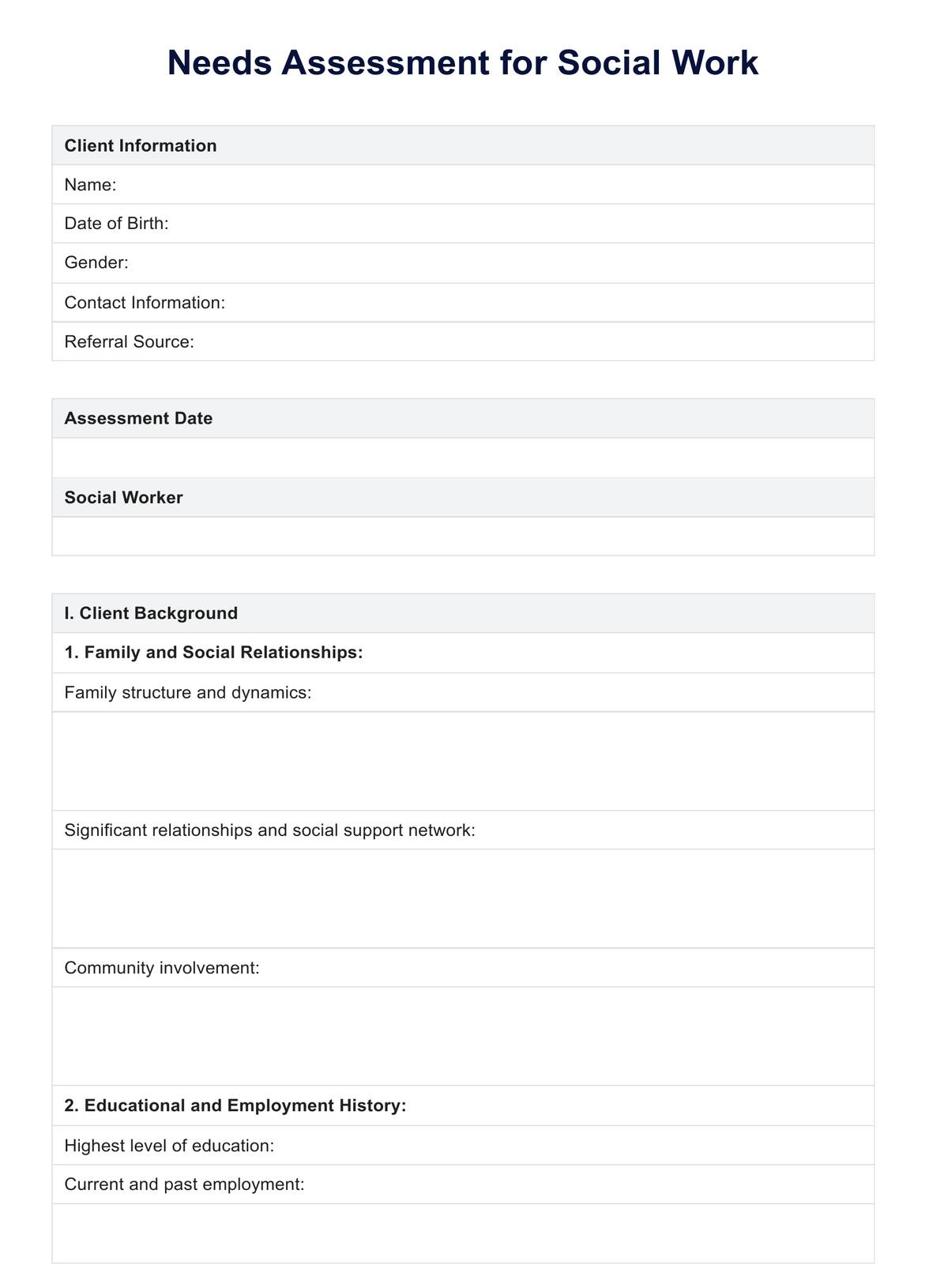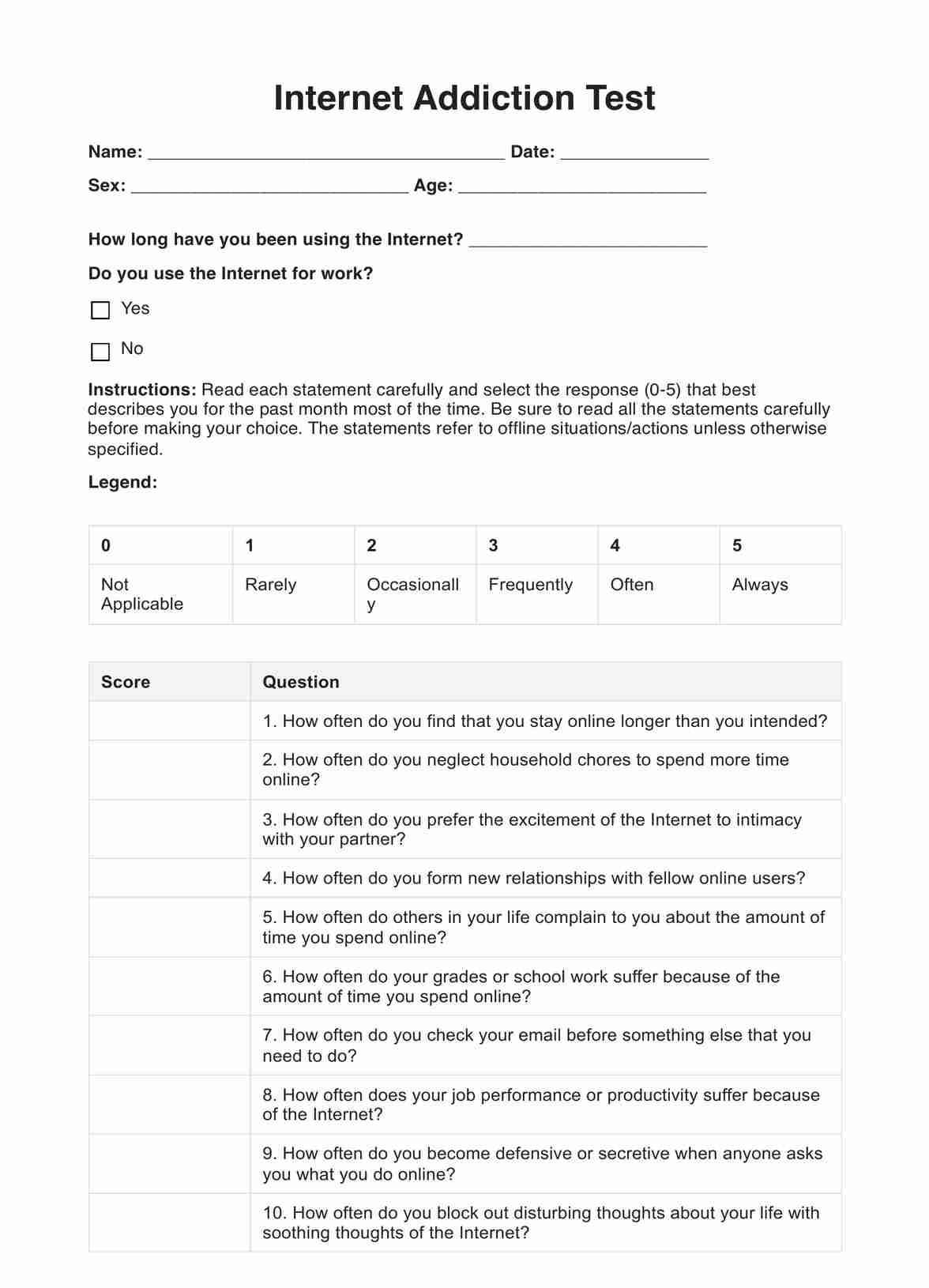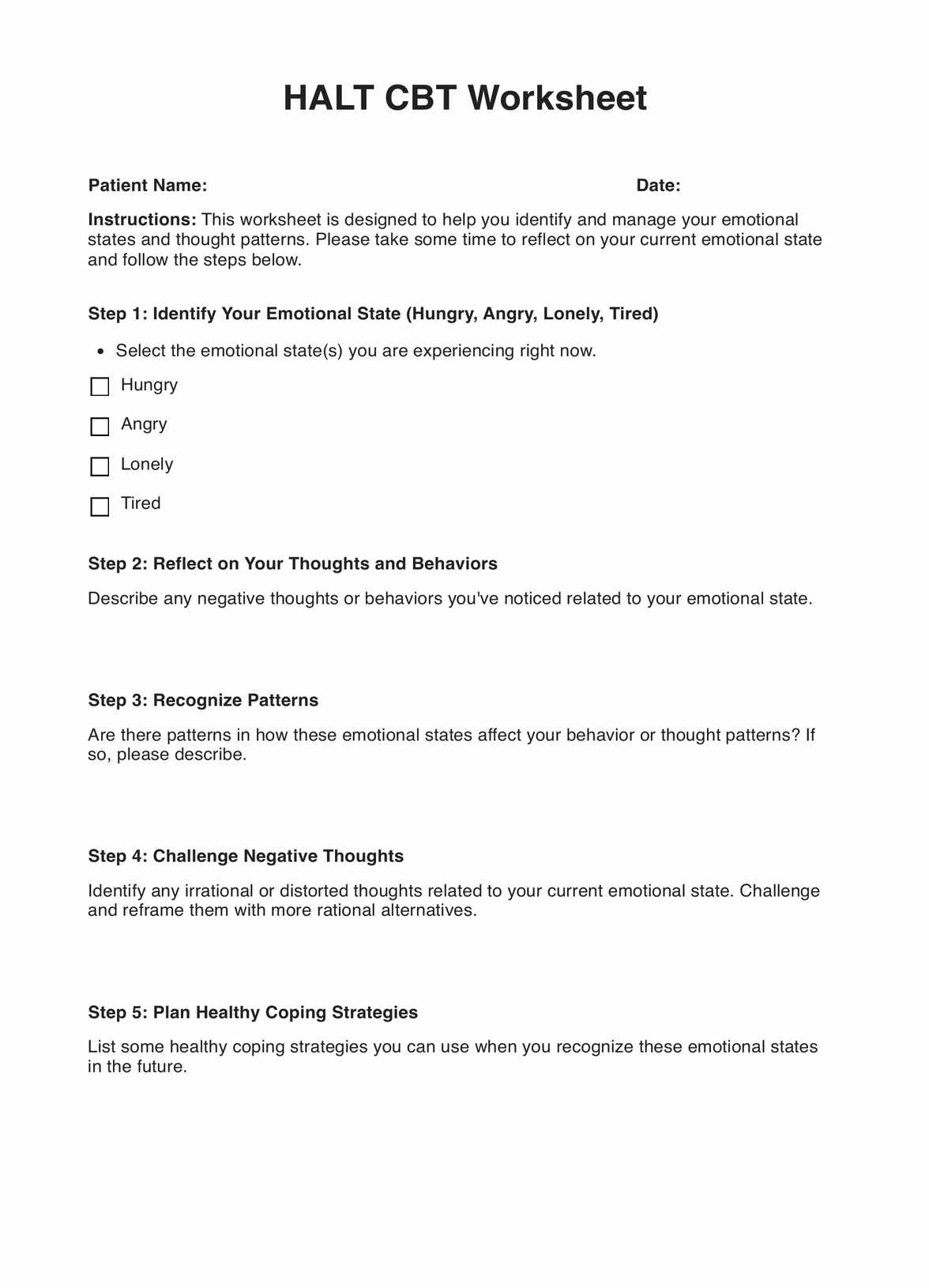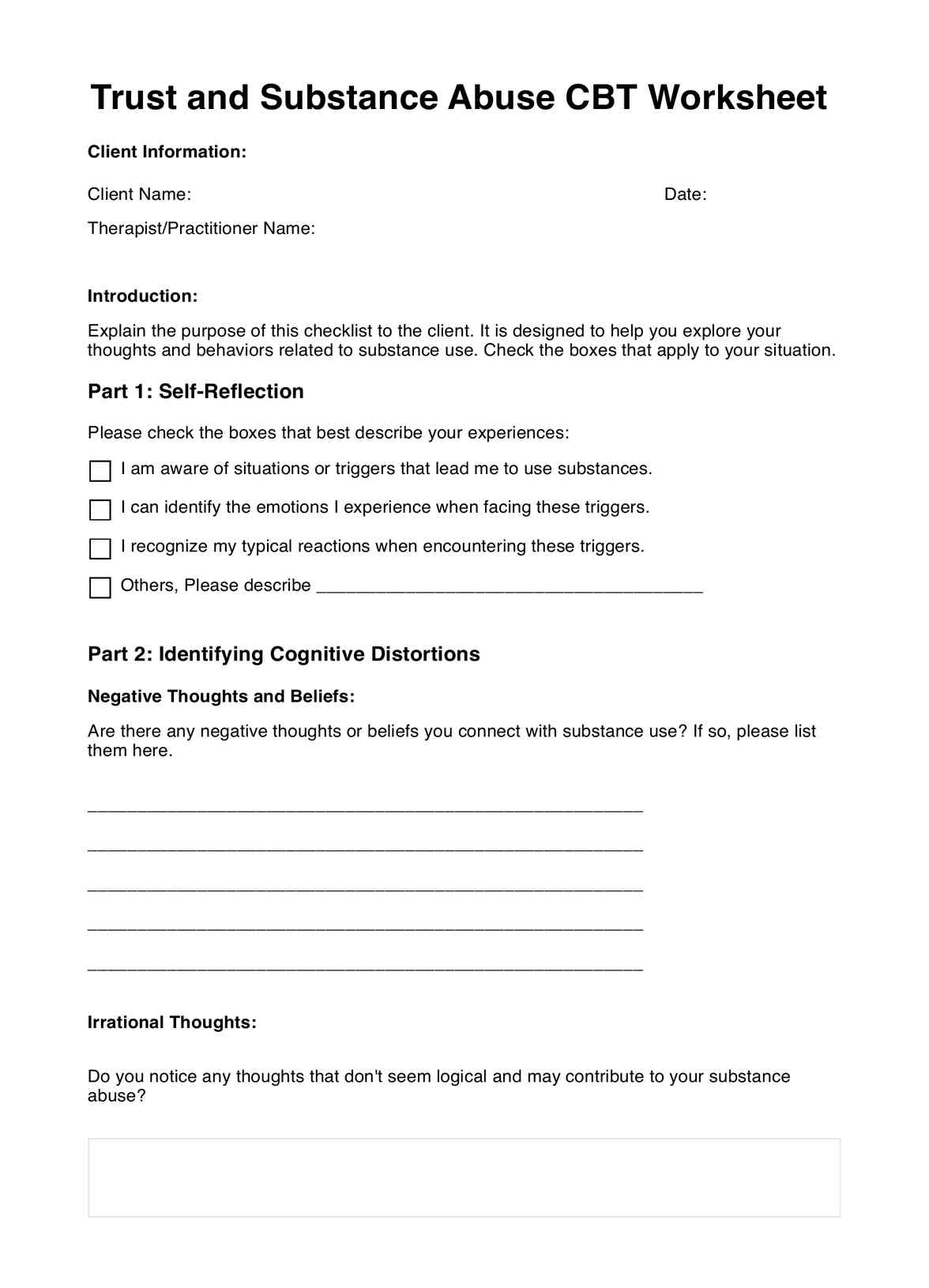Identifying Triggers Worksheet
Explore what sets you off through this free Identifying Triggers Worksheet PDF. Enhance your self-awareness through this printable worksheet and learn how to control your triggers.


What does it mean to identify triggers?
Identifying triggers is a technique used in cognitive-behavioral therapy (CBT) to help people recognize and manage their emotional triggers. An emotional trigger is any situation, event, or thought that elicits a strong emotional reaction, such as anxiety, anger, or sadness. The Identifying Triggers Worksheet is a tool for developing emotional awareness and identifying coping strategies to manage emotional responses.
The Identifying Triggers Worksheet is a simple yet effective resource that you can provide clients looking to manage their emotional triggers. A trigger worksheet helps people identify their own triggers, understand their reactions to them, and develop coping strategies to manage their emotions.
Identifying Triggers Worksheet Template
Identifying Triggers Worksheet Example
How does this Identifying Triggers Worksheet work?
The Identifying Triggers Worksheet is valuable in mental health and behavioral interventions. It helps individuals recognize and understand the events, situations, or stimuli that precede unwanted thoughts, emotions, or behaviors. Here's how you can effectively implement this tool in clinical practice:
Step 1: Introduce the concept and worksheet
Begin by explaining to the client the purpose of identifying triggers. Emphasize that triggers are not inherently negative, but understanding them can lead to better self-awareness and control. Provide the worksheet, including columns describing the trigger, the resulting thoughts/emotions/behaviors, and potential coping strategies.
Step 2: Guide the client through trigger identification
Assist the client in recalling recent instances of the problematic thought, emotion, or behavior. Encourage detailed descriptions of what happened immediately before these occurrences. This process helps uncover patterns and common triggers. Creating a non-judgmental environment where clients feel comfortable sharing openly is important.
Step 3: Analyze patterns and explore deeper connections
Once several triggers are identified, work with the client to recognize patterns. Are the triggers primarily environmental, interpersonal, or internal? This analysis can reveal underlying themes or core beliefs contributing to the client's reactions. Discussing these patterns often gives valuable insights into the client's experiences and perceptions.
Step 4: Develop coping strategies
Collaborate with the client to develop appropriate coping strategies based on the identified triggers and patterns. Encourage the client to practice these strategies between sessions and to continue using the worksheet to track progress and refine their understanding of triggers over time.
Who is this worksheet for?
The Identifying Triggers Worksheet is suitable for professionals who work with clients that want insight into their emotions and behavior patterns. It is an excellent resource for individuals who feel anxious, undergo stress, anger triggers, or other emotional issues and need a tool to help them identify the triggers that cause these emotions.
The Identifying Triggers worksheet can also benefit individuals who want to improve their self-awareness and emotional intelligence. By identifying triggers, they can learn how to manage their emotions and develop healthier coping strategies. It is also helpful for those who want to improve their communication skills and relationships with others, as understanding their triggers can help them communicate their needs and boundaries effectively.
You can also provide a copy of this worksheet to parents, caregivers, or educators who want to help children and teenagers identify triggers and develop healthy coping mechanisms. This resource benefits children and teenagers struggling with emotional regulation and expressing feelings. By identifying their triggers, they can learn to recognize and manage their emotions.
Benefits of an emotional triggers worksheet
The following are the benefits of incorporating the Identifying Triggers Worksheet into clinical practice:
Enhanced self-awareness
One of the primary benefits of using the Identifying Triggers Worksheet how it encourages self-reflection and self-awareness among clients. Individuals gain valuable insights into their emotional and behavioral patterns by systematically documenting and analyzing their triggers. This increased self-understanding is a crucial step in personal growth and emotional regulation.
Improved emotional regulation
As clients become more adept at recognizing their triggers, they are better equipped to manage their emotional responses. The worksheet provides a structured approach to understanding the link between triggers and reactions, enabling individuals to develop more effective emotional regulation strategies.
Targeted intervention planning
For healthcare practitioners, the Identifying Triggers Worksheet offers invaluable information for tailoring interventions. Clinicians can develop more targeted and effective treatment plans by understanding a client's specific triggers.
Empowerment and agency
Using the Identifying Triggers Worksheet empowers clients to take an active role in their own healing process. As they learn to identify and understand their triggers, clients often experience a greater sense of control over their lives. This increased sense of agency can be highly motivating in helping them learn how to cope and contribute to improved treatment adherence and outcomes.
Commonly asked questions
To identify a trigger, individuals can pay attention to their emotional and physical reactions in various situations. Triggers can be specific stimuli, such as sounds, smells, or interactions with certain people, that evoke strong emotional responses like anxiety, sadness, or anger. It can be helpful to use tools such as journals to keep track or an anger thermometer to be more aware of one's anger level and responses. Over time, patterns may emerge that reveal consistent triggers, allowing individuals to better understand what situations or stimuli provoke negative emotions and responses.
The four steps to working through triggers typically include: identification or recognizing and acknowledging the trigger when it occurs; understanding or reflect on the underlying reasons why this trigger affects you; reframing or challenging negative thoughts related to the trigger by assessing their validity and replacing them with more rational perspectives, and; response planning or developing coping strategies for managing one's reaction when faced with the trigger in the future.
Yes, understanding and identifying triggers can be particularly beneficial for students as they navigate academic pressures and social interactions. Teachers and educators can administer this tool before the school year to be more aware of students who may need some accommodations or support to foster a safe and inclusive educational environment.

.jpg)
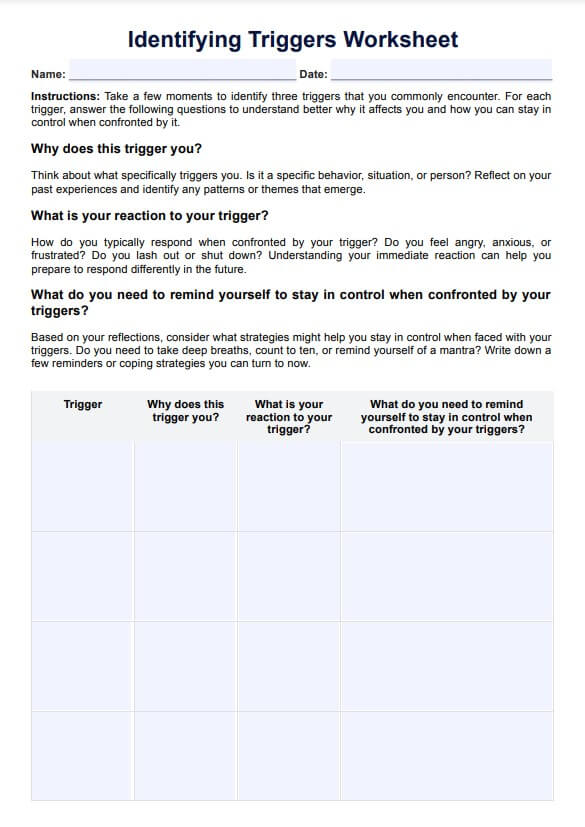
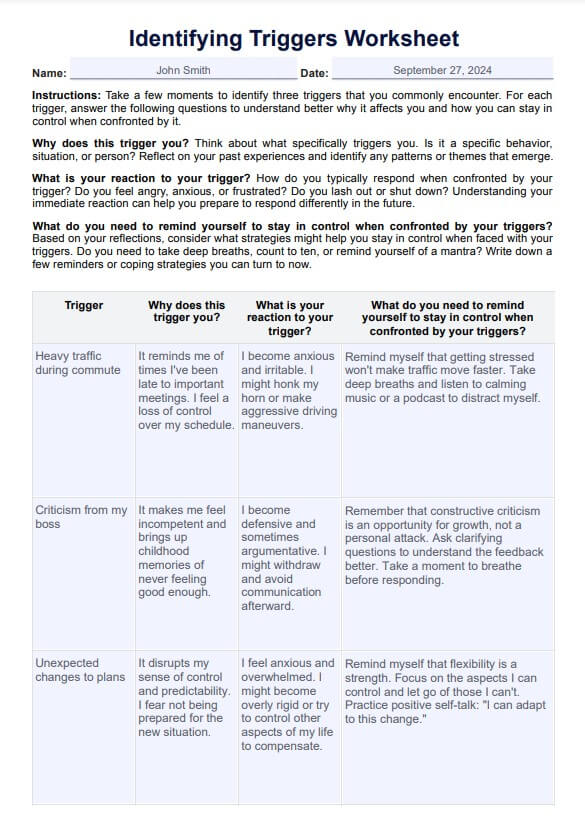

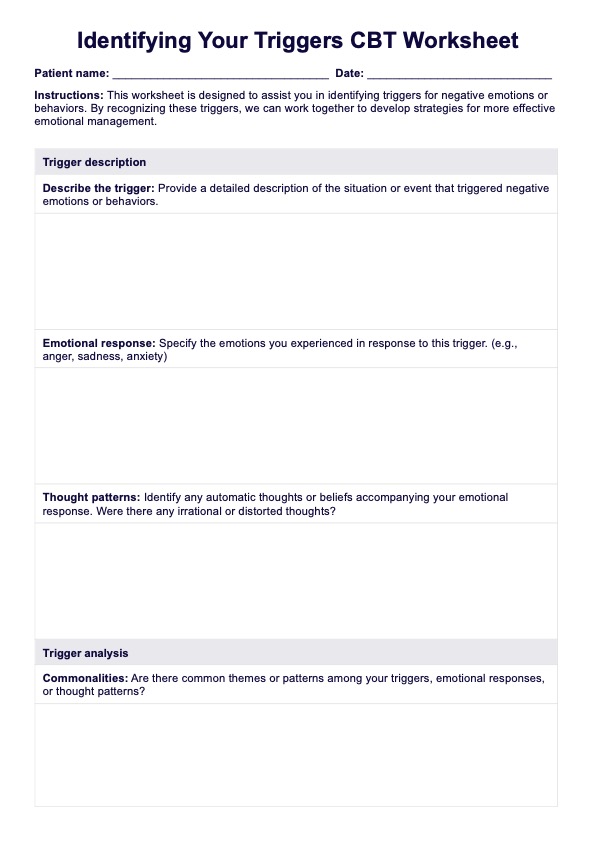













-template.jpg)






















































































